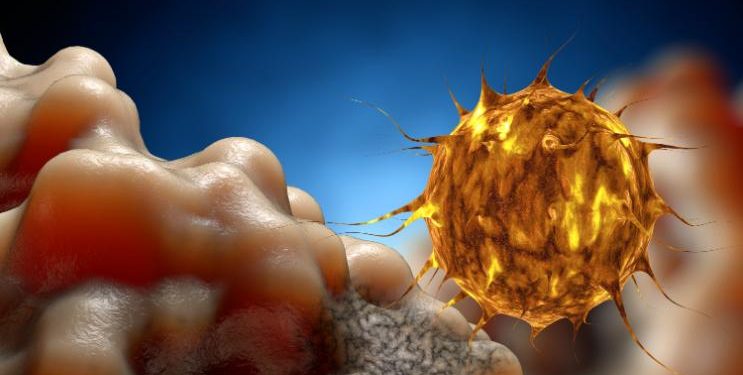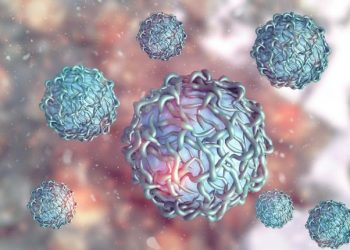Triple negative breast cancer (TNBC) is harder to treat than other types of invasive breast cancer. That’s because it doesn’t have receptors for estrogen or progesterone, or enough of the HER2 protein to make hormone therapy or anti-HER2 medicines work.
However, a recent clinical trial suggests that combining chemotherapy and immunotherapy may help improve survival for TNBC patients.
Treatment Options
Triple negative breast cancer doesn’t have receptors for estrogen, progesterone, or HER2. That means it is less likely to respond to hormone therapy, which is often used in women with other types of invasive breast cancer. However, chemotherapy is still an effective treatment for TNBC.
In addition to surgery, your healthcare providers may recommend radiation and/or chemotherapy to kill any remaining cancer cells. You might also have immunotherapy, which uses medications to encourage your body’s immune system to fight the cancer.
As research continues, new treatments are being developed for triple negative breast cancer. Ask your healthcare team about your options, including clinical trials.
The sooner your healthcare provider diagnoses and treats breast cancer, the lower the chance it will come back. Getting checked regularly with a mammogram and having a biopsy are important steps.
A biopsy is a sample of tissue from a tumor or lump. It is examined under a microscope by a medical pathologist, who determines the type of breast cancer.
Your doctor might also perform other tests to find out how far your cancer has spread (stage). These might include a blood test and/or an imaging scan, such as an ultrasound or MRI. Your healthcare provider might also order a genetic test to see if you have a mutation in your BRCA1 or BRCA2 genes, which increase the risk of breast and ovarian cancer.
Most triple negative and basal-like breast cancers are high-grade, or aggressive, and grow quickly. They might be more likely to spread to other parts of the body, such as the lymph nodes or bones.
The most common treatment for triple negative and basal-like breast cancers is a combination of surgery, chemotherapy, and radiation. Your healthcare provider might also give you a targeted treatment, such as an antibody-drug conjugate that attaches to cancer cells and delivers a chemotherapy drug directly to them. This reduces the chances that chemo will affect healthy cells as well.
Surgery
Triple negative breast cancer is a difficult type of tumor to treat because it doesn’t have receptors for the female hormones estrogen or progesterone and does not express the protein HER2. Cancer cells that lack these receptors grow quickly and tend to spread more easily than other types of breast cancer.
Researchers are working hard to improve treatment options for this aggressive form of cancer, which often has a worse prognosis than other types. A pre-clinical study from University of Adelaide researchers, for example, has found that a drug inhibits the growth of triple negative breast cancer without harming healthy tissue or causing serious side effects.
If you’re diagnosed with triple negative breast cancer, your doctor will evaluate your tumor and determine your stage — how far the cancer has spread at the time of diagnosis — before recommending any specific treatments. Depending on the stage of your cancer, you may have surgery to remove the tumor or a combination of chemotherapy and radiation therapy.
Surgery for triple negative breast cancer is similar to that for other types of breast cancer. Typically, surgeons will remove the tumor plus a small rim of healthy tissue around it, called a margin. This is known as lumpectomy or breast-conserving surgery. Your care team will also remove your lymph nodes from under your arm (node dissection).
Your care team will almost always prescribe chemotherapy for triple negative breast cancer. This is because the cancer often grows faster than other types of breast cancer and can spread to the lymph nodes and other parts of your body. Chemotherapy is the most effective systemic treatment for triple negative breast cancer because it helps to kill any cancer cells that have spread beyond your breast.
For triple negative breast cancer, your doctor will usually use the same types of chemotherapy drugs that are used to treat other types of breast cancer. Common chemotherapy drugs include anthracyclines such as Adriamycin, alkylating agents such as Cytoxan and fluorouracil (5FU). Your doctor may also add platinum-based medicines such as cisplatin or carboplatin to your regimen because they are more effective against triple negative and basal-like breast cancers than other types of chemotherapy.
Chemotherapy
Triple negative breast cancer tends to grow faster and spread more quickly than other types of breast cancer. It also tends to be more aggressive and harder to treat. But over the years, more effective treatments have reduced the chance of death from this type of cancer.
In the past, doctors didn’t have very many treatment options for triple negative breast cancer. But now, researchers are developing new drugs and combinations of drugs that can shrink tumors or help keep the cancer from coming back.
Doctors can use these new medicines even if the cancer has already spread to other parts of the body. This is called systemic therapy.
To find out what type of breast cancer you have, your doctor will do a biopsy. Then they will look at the tissue under a microscope to see if it is normal or precancerous or cancerous. They will also test your tissue to find out if the cancer cells have receptors for the female hormone estrogen, progesterone, or the protein HER2.
If your cancer has HER2-positive receptors, doctors can give you drugs that block the protein and stop it from promoting the growth of the cancerous cells. Doctors can also use this information to help decide which surgical or medical procedure is best for you.
A biopsy is a minor surgery where your doctor removes a small piece of tissue from the breast to test it for cancer cells. You will likely have a local anesthetic. It may take a few weeks to get the results of the biopsy.
Once they know the type of cancer you have, your doctor will talk to you about your treatment options. Most people with this type of cancer will need chemotherapy.
If you have triple negative breast cancer, your care team will use the same kinds of chemotherapy drugs they would use for other types of breast cancer, but the ones they use won’t have estrogen receptors. They will be drugs like paclitaxel (Taxel), carboplatin (Platinol AQ, Paraplatin AQ), or abetacept (Abetacept).
Some women with triple negative breast cancer have a fault (mutation) in the BRCA1 or BRCA2 genes. These genes prevent the cancer cells from growing and dividing. If you have this type of breast cancer, your doctor will talk to you about whether it’s important for you to have a genetic screening test or whether you should consider taking a genetic risk reduction medication such as BRCA1/2 inhibitors.
Radiation
Triple negative breast cancer spreads more quickly at a microscopic level from the beginning, so it’s important to seek medical attention as soon as you notice any signs or symptoms. They include a lump in the breast, changes in nipple size or shape, pain, dimpling of the skin, drainage or discharge from the nipple or swelling of the armpits. It’s also important to have regular screening tests with mammograms and ultrasound.
If doctors determine that you have a tumor, they’ll take a sample of it for further testing to figure out what kind of breast cancer you have and how far it has traveled. A pathologist will examine the cells under a microscope to see whether they’re normal, precancerous or cancerous. If they’re cancerous, they’ll test to see which kinds — hormone receptor positive or HER2-positive, for example.
Women who have HER2-positive cancer have a gene mutation that causes the body to make too much of a protein called HER2. This type of tumor is treated with drugs that block this protein from encouraging cells to grow and divide. Triple-negative tumors don’t have this gene mutation, so they cannot be treated with HER2-blocking drugs.
Since triple-negative breast cancer is more likely to spread to other parts of the body, doctors may treat it with chemotherapy and radiation after surgery. Chemotherapy shrinks the tumor before surgery and can reduce the chances of cancer returning. Radiation destroys any cancerous cells that might remain.
In some cases, your doctor might recommend a combination of chemotherapy and targeted therapy, such as PARP inhibitors or antibody-drug conjugates. These medicines enter your bloodstream and travel to cancer cells throughout the body, killing them or slowing down their growth. They’re usually used when your cancer has spread farther than your localized stage and when surgery isn’t an option.
Researchers are finding new ways to improve treatment options for women with triple negative breast cancer. For example, a study by the National Cancer Institute found that a type of drug called pembrolizumab, which blocks certain proteins, was significantly more effective than standard chemotherapy in treating advanced (locally advanced or metastatic) triple-negative breast cancer in some patients. The drug is now FDA-approved for use in this group of patients.









